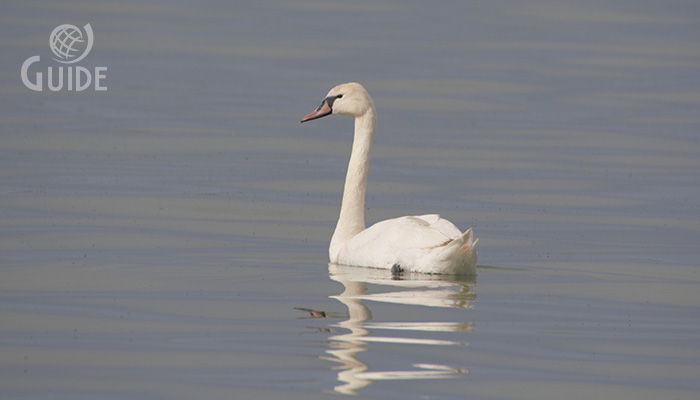
English: Mute
Swan
Russian: Лебедье-шипун
German:
Hockerschwan
French: Cygne
tubercule
Mongolian: Хуруут хун
Japanese:
コブハクチョウ (Kobu-hakucho)
Body
length: 140-160 cm
Wing
span: 200-240 cm
Status: Rare species. According to the IUCN Red List categories and
criteria, the species evaluated as-Near Threatened.
Distribution and Range in Mongolia: Breeds and summers in the Uvs, Boontsagaan, Orog
and Ulaan lakes, and Khovd river.
Habitat: Breeds on freshwater lakes, generally with
reedbeds, and along coasts. Hardy, requires only open water in winter. Nest a
large mound of reed stems etc., or, on coasts, a heap of seaweed. Not shy, and
can act aggressively. ♂ have territorial fights with wing-splashing rushes and
long ‘slides’ on the water.
Identification: Huge.
Plumage white. Neck very long, head small. Tail comparatively long and pointed.
Bill orange-red with prominent black knob on forehead, black nostrils, cutting
edges and nail. Neck held either fairly straight or, more typically, smoothly
bent in S-shape when swimming. Threat posture with wings raised like sails and
head lowered over back diagnostic. Sexes similar (♂ larger; bill-knob of ♂
larger, especially when breeding; colour of bill deeper orange on♂). Difficult
to separate from Whooper in flight at distance; at times, however, head looks
more abruptly ‘cut off’ in front.
- Juvenile: Grey-brown
with pink tinge; bill first dark grey, then pinkish-grey, without knob.
Separated from juvenile Whooper by darker and browner plumage. White plumage
attained in 1st summer or 2nd autumn. A rare variety is born pure white
(‘Polish swan’)
Population and Threats: in 1962, 22 birds were recorded on the Orog lake, 2 on the
Boontsagaan lake, in 1974, 2 near the Khovd river Ulaan Mountain, in 1976, 8
were recorded on the Ulaan lake. Breeds on the Uvs, Orog lakes. Can be sighted
at the Boontsagaan, Ogii, Olziit, and Buir lakes, Khovd river.
Conservation measures: Hunting prohibited since 1973, Included as Rare animal in the
Annex to the Mongolian Government Resolution #7 (2012), included in the CITES
and CMS, Annexes. Distribution area is included in the within the Uvs lake
Basin Strictly Protected area. The Orog, Boontsagaan and Buir lakes listed as
Ramsar sites, in accordance with the Ramsar Convention.
Further actions: Study on distribution and reproductive biology, in order to
avoid disrupting the nesting and summering, livestock grazing should be
restricted in these areas, create conservation management plan for the
endangered birds, raise public awareness.